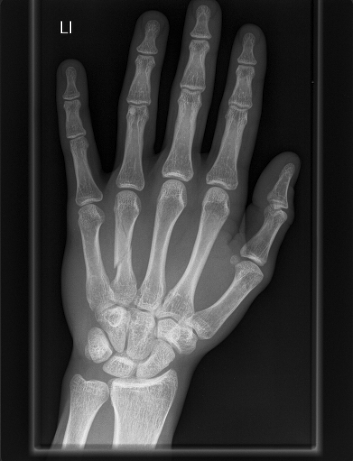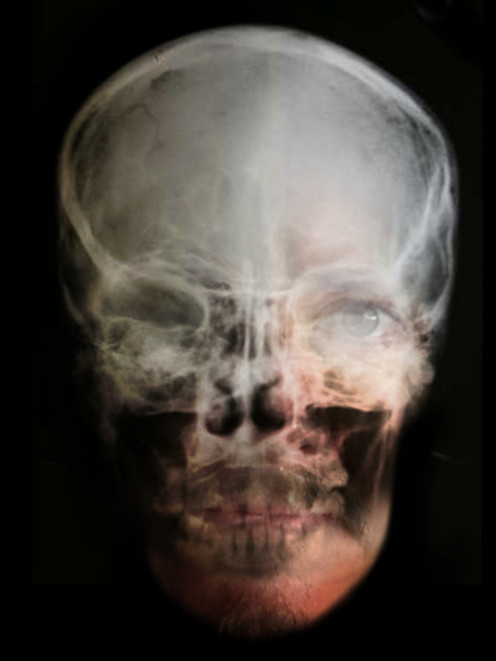What are X-rays?

X-rays are EVERYWHERE
You wouldn't know it, but X-rays are all around us! They come from both naturally occurring and man-made sources. And since the discovery of X-rays by Wilhelm Conrad Roentgen in 1895, they have been an important part of our lives – primarily because of their use in medical X-ray imaging.
But what is an X-ray?
X-rays are part of the same 'spectrum' as visible light, but because they are at the far end of this electro-magnetic spectrum they have very different properties than the light our eyes detect.

Because we can't see X-rays, we're often unaware of their presence all around us — but they are around us, everyday, and they come from a number of sources.
So where do X-rays come from?
X-rays are used to produce medical images and scans — but where do they come from? The biggest source is nature like rocks and space. Very hot bodies, such as stars and our sun, produce X-rays as part of their reactions but luckily nearly all of these are absorbed by our atmosphere. Man-made X-rays are produced in specialised equipment for medical, industrial, and scientific uses.


And how can X-rays see through stuff
The energy/wavelength of X-rays allow them to pass through some things and not through others. This comes down to chemical make-up, and it's this characteristic that allows us to create medical images. The human body is made up of a large variety of very different tissues — from hard teeth and dense bone to soft things like the lungs and bowel — and they all absorb X-rays differently!
How does this 'stuff' affect X-rays
Bone contains plenty of hard, dense calcium which is the reason it supports our weight. It's also the reason it absorbs more X-rays.
Skin, muscle, and other 'soft' tissues in our body are far less dense and contain less X-ray absorbing molecules. Because of this, far more X-rays pass through the skin and muscle than through the bones.
The most important part of making sense of these X-rays is to create an image from them. And because the amount of X-rays making it all of the way through the body depends on how 'dense' that bit of body is, an X-ray image is simply a shadow cast by our body tissues!


What can X-rays show us?
Diagnostic images can be used to:
- See breaks in bones, or other indications (such as fluid) that suggests a break
- Identify dental problems in teeth before they are visible
- visualise the 'soft tissues' of the body to diagnose tumours and other problems
- Assist surgeons and doctors to perform procedures using the smallest cuts (key-hole surgery)
- Allow orthopaedic surgeons to accurately insert pins and screws into broken bones
- Identify gall stones and renal stones (in the kidneys) that can cause pain
Therapeutic uses in medicine
Radiation therapy (or radiotherapy) uses focused beams of X-rays to reduce the size of tumours. In a lot of cases they can be destroyed altogether. This procedure can be complemented by chemotherapy — the use of strong medication to attack tumours from within.
Radiotherapy uses X-ray energies far greater than the ones we use to make images. To complete a course of radiotherapy it will often require many individual treatments.

Other uses of X-rays
Naturally occurring cosmic X-rays can be used to analyse the substance of the universe and can show us information that isn't visible to our eyes. Some objects such as stars and black holes give out X-rays which we see using special telescopes. Because X-rays were produced by the Big-Bang, vast amounts of information has been gathered to help scientists understand what happened at the beginning of the universe.
Scientists also use the properties of man-made X-rays to analyse the composition of chemical substances. X-rays have a smaller wavelength than light which allows them to image even smaller structures than 'optical' microscopes.
Man-made X-rays can be used to detect weaknesses in metal structures. When a minute crack occurs in metal it can often be because of stresses within the metal itself. This type of damage is impossible to see with the naked eye, but because X-rays can 'see' different densities, cracks and stresses can be seen before it's too late. This saves time and money, and even lives, by finding where future problems might occur in places like high rise buildings and oil rigs.

Our invisible world
X-rays can 'see' so much more than the naked eye. From broken bones, tumours, and defects in metal, to the atoms and molecules they're made from. With the great technological leaps being made today, other things might soon be used instead of X-rays — but until then, they continue to play a key role in our lives.
More information
- NASA, science and X-Rays
- How to Get Ready for an X-ray
Having an X-ray can be daunting, but having some basic information on how to prepare, and what to wear for your upcoming X-ray examination can make you feel a little more at ease.



